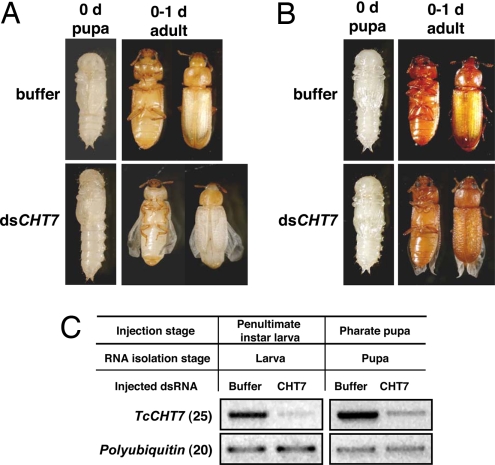Fig. 3.
Effect of dsRNA for TcCHT7 on pupal or adult development of Tribolium. dsRNA for TcCHT7 (200 ng of dsRNA per insect; n = 20) was injected into last instar larvae (A) or into pharate pupae (B), and morphologies were recorded as shown. Normal phenotypes were observed in the buffer-injected control insects (top images of each set). Note that TcCHT7 dsRNA-injected larvae pupated on schedule, but the resulting pupae failed to contract their abdomens and to expand their wings/elytra. After adult eclosion, the hind wings also did not fold or unfold properly. The surface of the elytra was very uneven, and the elytra were substantially shorter than normal. When dsRNA for TcCHT7 was injected into pharate pupae, near-normal phenotypes were observed in the pupal stage. However, unlike buffer-injected controls, TcCHT7 dsRNA-treated insects failed to fully expand their adult wings/elytra, and their wings did not fold or unfold properly. (C) Effect of dsRNA on TcCHT7 transcript levels. Four insects were collected from each treatment group for RNA extraction. RT-PCR was used to detect the transcription level of TcCHT7.

